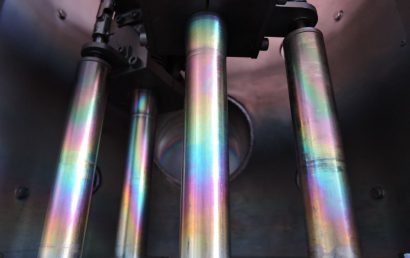How Do Superalloy Protective Coatings Work?
Before we can discuss whether or not superalloy protective coatings work, let’s clear up one burning question – what is a superalloy? It is a specially designed metal for applications that need a lot of resistance to corrosion, tensile strength, and elevated temperatures. Ordinarily, there are three possible types under which these superalloys are categorized:
- Nickel iron base
- Nickel base
- Cobalt base
Most frequently, you will find these superalloy protective coatings used in aerospace turbines, industrial turbines, and chemical conversion plants. Additional protective coatings are needed by some superalloys, despite their high resistance properties. This is particularly applicable if they are used under extreme loadbearing conditions or under temperatures near their incipient melting points.
Understanding Superalloy Protective Coatings
The shielding of components from environmental stresses and affects which could be potentially harmful is why most superalloy coatings are used. For materials functioning at or above 1850°F, there is a particular emphasis put on structural integrity and increasing heat tolerance. The layer of material providing the protective coating inhibits or blocks interaction between damaging environmental conditions and the substrate.
Damage can take the form of mechanical property loss due to high temperature diffusion where the substrate is infiltrated by contaminants; or, due to corrosion and oxidation, metal wastage. These effects are shielded against by specially designed superalloy substrates where most protective coatings are concerned.
The Compatibility of Coatings
Most superalloy applied coatings are not inert. They feature physical and chemical properties that vary from whatever they are protecting. Thanks to the reactions between environmental oxygen, chromium, and aluminum, a closely bonded, dense oxide scale is created by superalloy coatings. This impedes the diffusion into the substrate of sulfur, nitrogen, and other contaminants. Enough silicon, chromium, and reactive aluminum must be contained within these coatings to continuously form the protective scale. Additionally, however, where the substrate is concerned, they must also be moderately compatible.
It is essential to use certain application methods and coating materials for compatibility. They must reduce the following:
- Diffusion of coating elements into the base surface.
- Unwanted reactions between the substrate and coating.
The reduction of the above stated is important because issues may arise causing void formation, spalling, cracking, and other material flaws. These issues can undermine the superalloy’s mechanical properties. Usually most effective are coatings that feature some degree of ductility because compatibility can also be affected by differences in thermal expansion rates.
Effects You’re Trying to Protect Against
The protective coatings discussed here most frequently protect against two basic types of deteriorating effects. They are as follows:
- Hot corrosion – One of the most accelerated oxidation processes is hot corrosion. You want to avoid the effects of hot corrosion which is usually caused by sulfur, salt, or other environmental contaminants. Though hot corrosion is impeded by most nickel iron-based and cobalt-based superalloys, some nickel base varieties are prone to the effects of deterioration.
- Oxidation – The other of the two most basic types of deteriorating effects is oxidation. For alloy materials, some of the most common environmental threats come from oxygen reactions. Particularly for cobalt and nickel base alloys, performance and material quality can be degraded seriously at higher temperatures.
A&A Coatings has protective coatings for every substrate. No matter your industry, some type of protective coating is used somewhere along the way. If you would like to find out what protective coatings can do for you as a business owner, or how they are currently being used in your industry, talk to one of our knowledgeable representatives today.




